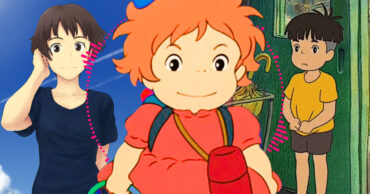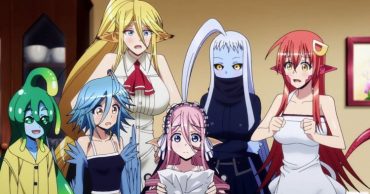
Unless you’ve been living under a rock over the past couple of months, the live-action anime, Cowboy Bebop, has officially been canceled by Netflix after a one-season run. The latest adaptation of the classic anime was met with mixed reactions; however, the key thing is that Cowboy Bebop follows a string of anime stories that have failed to resonate with American audiences. Films such as Dragon Ball: Evolution, Ghost in the Shell, and Death Note are just some of the adaptations that have come and gone with disastrous efforts, and that’s mainly due to Hollywood not understanding the appeal of its anime counterparts in the first place. One of the biggest crimes of these adaptations is not featuring a prominent cast of Asian/Japanese actors. Cowboy Bebop didn’t have this issue – and we’ll get to the source of its problems later – but for well over two decades, Hollywood has been hesitant in giving a prominent diverse role to Asian/Japanese actors. Crazy Rich Asians helped debunk the myth that audiences weren’t willing to shell out money to watch an Asian cast, Parasite confirmed that audiences are willing to watch foreign content and the big success of Netflix’s Squid Game only reinforced that notion.
However, the reason why it’s crucial for Asian/Japanese actors are the ones that should portray their anime counterparts isn’t just due to the fact that it will match the source material. When you’re watching an animated show, you can feel just how vastly different the entire world is. Sure, it’s all fiction, but the style, the culture, and the sounds all play an important role just like the main protagonist. Try watching shows like Tokyo Ghoul or Death Note side by side to shows such as The Simpsons or Family Guy. Yes, the styles and tone of Ghoul and Note are vastly different from The Simpsons and Family Guy; however, the key focus is on the animation and world that the anime and long-running cartoons portray. By plucking anime projects and turning them into American stories, you lose a huge part of the character that helps establish anime cartoons. Dragon Ball: Evolution has a host of problems going on, including not understanding the source material. In the anime, Goku was in a sheltered environment where he didn’t even know that girls existed until he meets Bulma. Again, the environment plays a huge factor that affects the main protagonist’s mindset and upbringing. Dragon Ball: Evolution turned Goku into a horny and dorky American teen who feels suited for a CW television series. He doesn’t even come close to representing the culture and world of Dragon Ball Z. Even if a cast of Japanese actors were featured in the 2009 feature, this adaptation would still be horrible because it still represents the western version of its source material.
However, it’s not just the fact that most of these adaptations fail to take place in a Japanese environment, it’s also that the source material is rarely adapted properly. It’s extremely hard to translate any source material. However, filmmakers tend to often drastically change the material for non-sensical reasons. In Netflix’s Death Note, the changes of Light Turner heavily ruin the once complex narrative. In the original anime, Light Turner is a pretty smart guy who randomly gets a book from the sky known as the Death Note and uses it to take out terrible criminals. Slowly, Turner starts to transition over to the darker side, enjoying his bloody works for all of the wrong motivations. In the Netflix film, Light’s motivation is primarily to impress a girl that he likes. It kills all the intrigue and the compelling narrative for his character because his motivations for murdering people are selfish. Yes, they’re mostly criminals, but this strange turn feels like something you would see in a Young Adult novel. It’s understandable that filmmakers may want to change the source material a bit, and honestly, that’s perfectly fine. As long as it still translates the message of the source material then making minor changes is not a big deal. That’s not the case here. It seems that they changed Light’s character to Americanize the story. Dragon Ball: Evolution, Ghost in the Shell, and The Last Airbender also make changes that ruins the source material.
Now, noticed I haven’t talked too much about Cowboy Bebop. In truth, the Netflix show is actually good. The live-action adaptation captures the mood, style (maybe a bit too stylistic), and characters properly; however, the core issue with Cowboy Bebop is that it’s TOO faithful to the anime series. Ideally, that’s great but it doesn’t have much of a voice on its own. The writers didn’t do anything drastically to change the story, but they could’ve added something to make it not feel like a retread of the anime. Granted, it’s not a shot-by-shot adaptation, but it’s pretty damn close. It’s a tricky balance. Adaptations should be faithful enough to the source material, but adding a few wrinkles here and there are necessary in making it stand on its own two feet. What’s the purpose of watching the live-action counterpart when I can stick to the gorgeous and layered animation version? Clearly, anime adaptation isn’t easy; however, the key thing is understanding the source material. While the case of Cowboy Bebop may be that many audiences just simply weren’t that interested to begin with, the other bad live-action features failed to capture the spirit of what made their predecessors work.Cowboy Bebop
 Follow Us
Follow Us






No, it has nothing to do with the casting. And, really, the characters in anime seldom look Japanese to begin with. Nope, we just don’t like seeing live action because we *do* like seeing animated characters instead. Live action is too “busy.” Animation is simple, straightforward, and focused. Live action can never be as focused on the characters; the actors always get in the way.